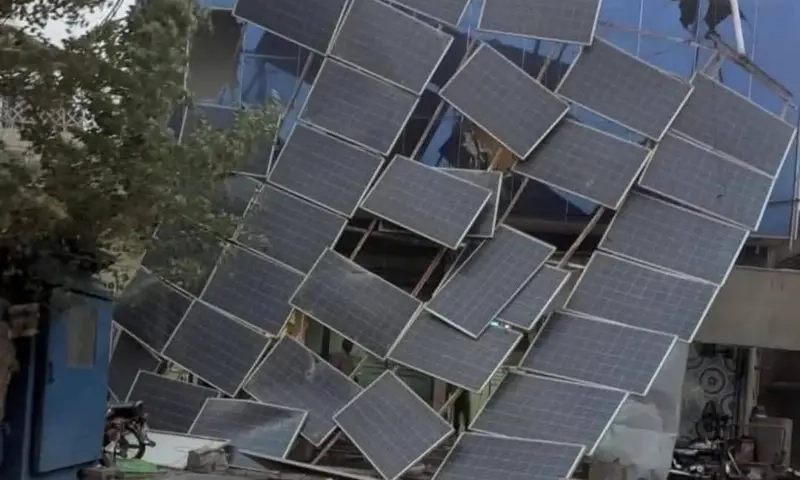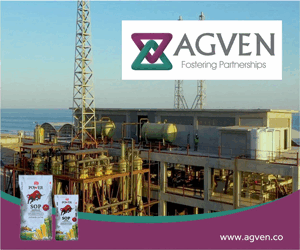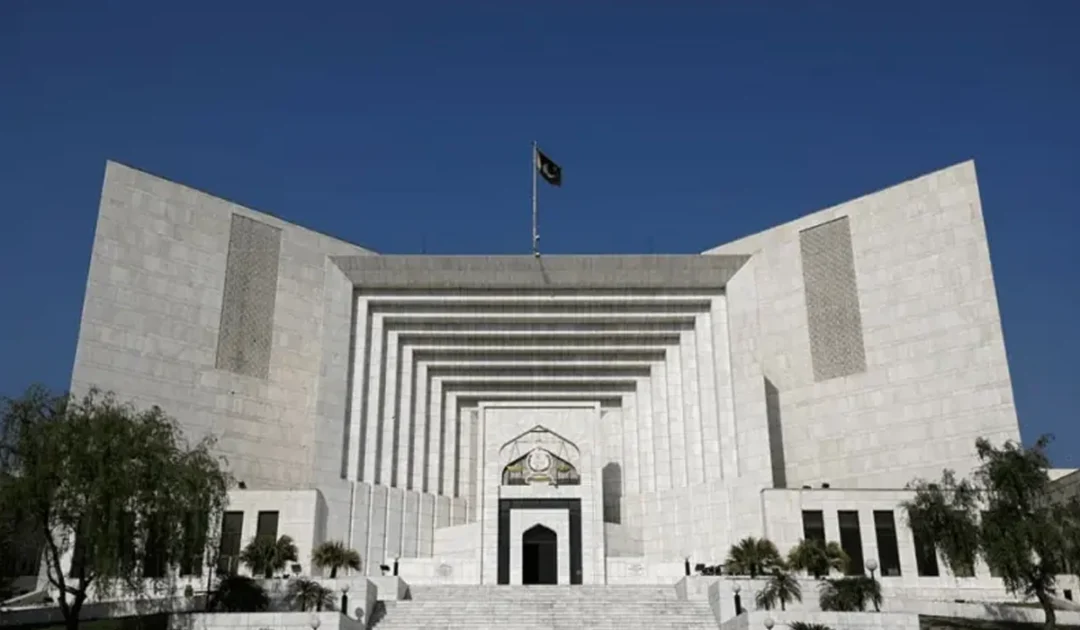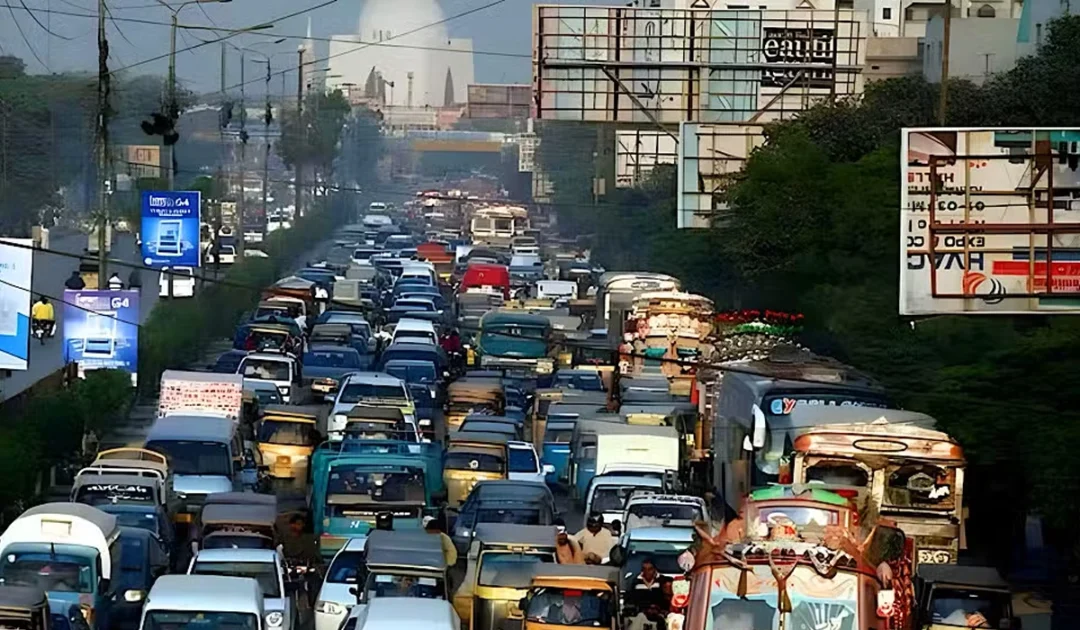- Web Desk
- 47 Minutes ago

Falling solar panels in storms — how can this be prevented?
-
- Web Desk
- May 28, 2025

ISLAMABAD: “When strong winds recently swept through Islamabad, two solar plates installed on my rooftop were blown away. The entire structure of the solar panels installed on the house across the street collapsed in the storm,” said Hasan Raza, a resident of the federal capital.
Hasan is among millions of Pakistanis who have installed solar panels on their rooftops to meet electricity needs.
In recent days, reports have surfaced of both human casualties and property damage linked to falling solar panels during storms.
In a report on May 25, Punjab’s Provincial Disaster Management Authority (PDMA) said, “70 per cent of the accidents were caused by solar panels or associated installations.”
However, in a key statement, the Pakistan Solar Association denied this, claiming the damages caused by solar panels during the storms have been exaggerated.
It is worth noting that just a month earlier, in mid-April, hailstorms in Islamabad damaged rooftop solar panels.
Also read: Senate committee deliberates local manufacturing of solar panels
Pakistan is considered one of the world’s largest solar markets. According to the “Global Electricity Review 2025” by UK-based energy think tank Ember, Pakistan imported 17 gigawatts worth of solar panels in 2024—the highest in the world.
Seven Injured by Falling Solar Panels in Punjab
With forecasts of rain and windstorms across various parts of Pakistan, the Meteorological Department has also flagged falling solar panels as a potential threat—alongside damage to livestock and property.
PDMA detailed damages from the May 25 storm, reporting that two people died in Jhelum after a solar panel and wall collapsed, while one person was injured in Khushab due to a falling panel.
According to Rescue Punjab spokesperson Farooq Ahmed, a person in Mianwali was injured on May 27 when a solar panel fell from a roof due to high winds. Rescue 1122 confirmed the injury was caused by a panel hitting the person’s head.
Speaking to the BBC, Farooq Ahmed said at least seven people were reported injured in recent incidents involving solar panels during storms.
On May 26, PDMA reiterated in a notice that “70 per cent of recent accidents were due to solar panels or their related installations.”
PDMA Director General Irfan Ali Kathia said in a circular to relevant departments that “panels installed using substandard methods fell from poles during the windstorm, leading to accidents.”
He urged that “solar panels installed on rooftops or open structures should be mounted with safety precautions.”
Kathia added that to prevent such losses in the future, it is essential to “conduct detailed inspections” of installed panels and structures, ensuring that installation is “standardised and certified.”
However, the Pakistan Solar Association rejected the claim that most casualties were caused by solar structures.
Chairman Waqas Musa said, “It is unfortunate that solar panels are being targeted without proper context.”
He added, “Such narratives can damage confidence in this sector.” The Association advises the public to follow approved engineering guidelines and maintain safety standards during solar installations.
Strong Winds Cause ‘Losses Worth Millions’
Islamabad resident Hasan Raza recalled that when the windstorm damaged the panels on his roof, he was standing on the roof himself. “I couldn’t even stand in one place due to the pressure of the wind. It was so strong that the plates came loose and twisted.”
Based on his recent experience, he believes solar installations should be inspected every one or two months. “People have invested eight to ten lakhs, even up to 1.5 million rupees on their rooftops. It needs attention. I suffered a loss of about Rs 65,000. My neighbour’s entire solar structure, worth lakhs, collapsed.”
Zaheer Butt, who works in solar system installation in Islamabad, told the BBC that during recent accidents, “people have suffered losses worth millions due to fallen or broken solar panels.”
“A normal-sized panel alone costs Rs 18,000, and most homes have over ten installed,” he said.
He explained that in rural areas, solar panels are often installed in open fields for tube wells without any solid structure. “They’re fixed into soft ground, which isn’t reliable.”
In contrast, rooftop panels in urban homes are usually mounted on strong structures, making them less prone to falling or breaking.
How to Make Solar Panels and Related Installations Safer
Companies that sell solar systems often claim that, if installed correctly, the panels can withstand strong winds and storms.
In the U.S. state of Florida, for example, it is a legal requirement for installed solar panels to endure winds of up to 140 miles per hour due to frequent hurricanes.
However, if installation is poorly done, falling panels are not uncommon—even in other countries.
Zaheer said rooftop panels usually follow government regulations. “We use 14-gauge rust-free piping. Improper installation not only risks the structure but can also reduce energy output.”
He explained that the solar panel structure is raised from the roof or ground, and “its height is kept such that air can pass underneath.”
“For example, if a roof’s wall is four feet high, the panel structure is raised six feet at the front and eight to nine feet at the back, allowing wind to pass underneath freely.”
Zaheer added that without a solid base, panels remain at risk. “It’s also important to check if the structure is weakening due to rust. Garder structures are less prone to rust and last longer when painted.”
According to Zaheer, “maintenance is necessary after installation. Every few months, bolts and nuts should be checked—otherwise, in even a mild storm, the panel may rattle and make noise.”
He recommends that solar panels installed on garder structures need only regular tightening of bolts and rust prevention.
Experts also advise that in case of any damage, the solar system should be shut down until repairs are completed.






